Guitar World Verdict
A decidedly different kind of guitar, the Squier Paranormal Baritone Cabronita Telecaster is incredibly good value for money, providing a versatile playing experience that will suit modern metalheads just as much as it will inspire vintage tone lovers.
Pros
- +
Phenomenal sounding pickups
- +
Super playable neck profile
- +
Excellent tuning stability
- +
Fantastic value for money
Cons
- -
Slightly uncomfortable body carve
- -
No case included
You can trust Guitar World
Seeing a recent rise in popularity of late thanks to the resurgence of noughties nu-metal, baritone guitars are finding their way into the arms of those players who seek the extended lows of a 7 or 8-string guitar, but still crave the familiarity in scales and chord shapes of a regular electric guitar. The Squier Paranormal Baritone Cabronita Telecaster comes in at an excellent price point, offering the perfect entry into the most unusual of six strings.
The Baritone Cabronita Telecaster is the cheapest 'big-brand' baritone you can get below $500/£500, with the only other option being the slightly more expensive Squier Classic Vibe Tele. If you're UK or EU-based, then there's a selection of Sub Zero and own brand baritones from Gear 4 Music and a Harley Benton Baritone from Thomann that come in cheaper, but for US guitarists there's nothing else that doesn't require you to spend a little more.
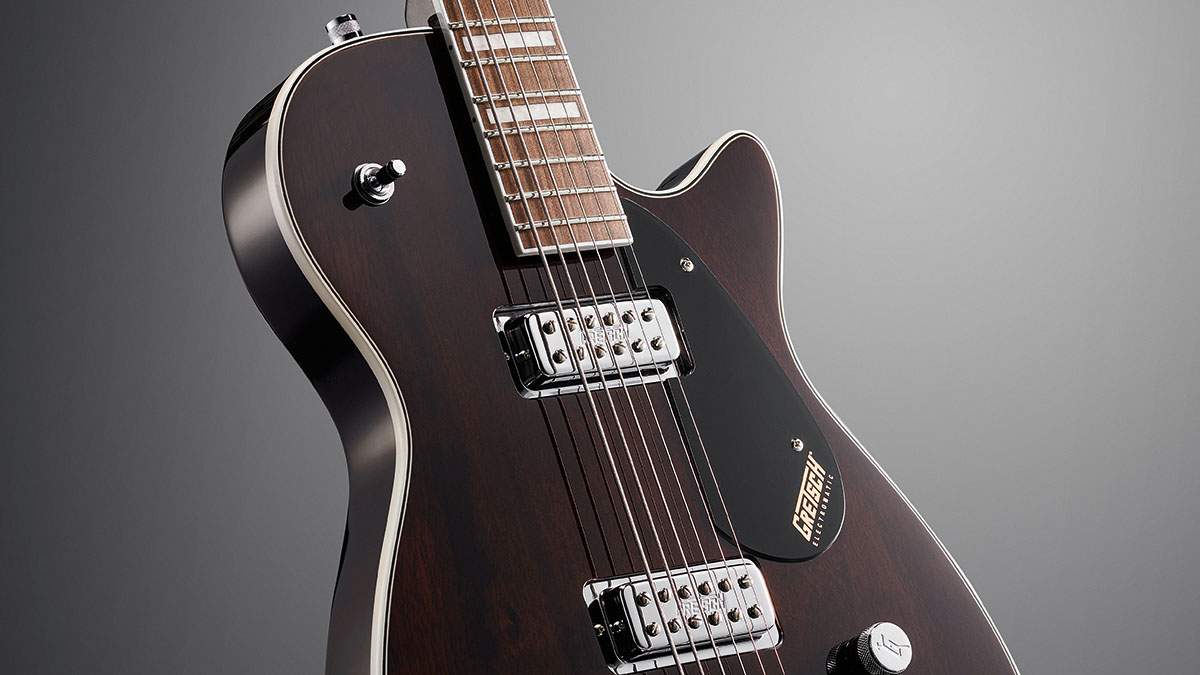
Gretsch G5260 Baritone: An attractively priced baritone that looks classy, features a fantastic playing neck, and can cover a lot of sonic ground.
To find another instrument in the same class around this price point, your next closest choice is a Gretsch or Danelectro which can be found just north of that mark, or the more metal-orientated Chapman ML-1 which goes for around $699/£500. For those who want something cheaper, you’ll have to start perusing Reverb or Facebook Marketplace – and we all know what it is like dealing with people on Marketplace.
As a guitarist in an alt-metal band and current owner of a couple of baritone guitars, I'm handily placed to provide an overview of whether or not this guitar is worth your hard-earned cash, whether it’s more geared towards vintage tones, or if it really can hold its own as a proper djent machine. I was sent the Squier Paranormal Baritone Cabronita Telecaster by Fender for the purposes of this review, and I’ve put it through its paces at home, in the studio, and on stage.
Squier Paranormal Baritone Cabronita Telecaster review: Features
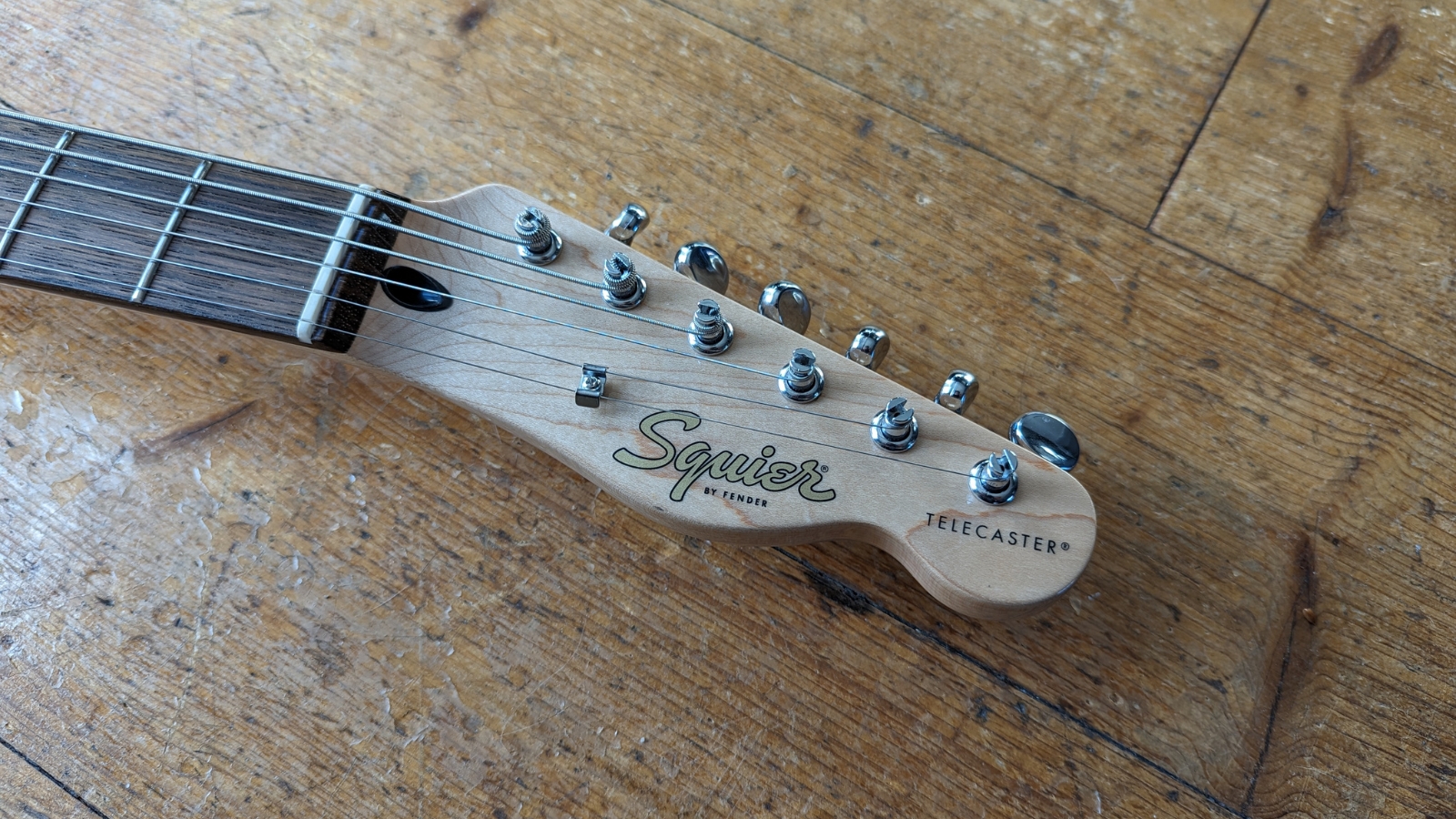
The Squier Paranormal Baritone looks like your typical Cabronita Telecaster with two pickups, a hardtail bridge, and of course, that super cool minimal pickguard design. The key difference with this baritone model however is the 27” (686mm) scale length. Increasing the space between the nut and the bridge by two inches may not sound like a lot in terms of pure numbers, but it significantly changes the playability and sound of the guitar - more on which later.
The body is poplar and my review model has a three-color sunburst colorway. Traditional sunburst is rarely my first choice when it comes to choosing a guitar color, but I instantly took a liking to this one, which features a lighter and more gradual gradient from black to orange that you wouldn’t initially expect from pictures alone. It’s also available in a rather fetching Surf Green, but those are your only two choices.
On the spec sheet, the maple neck is a typical Fender ‘C’ shape but feels significantly thicker in the hand. Your playing platform is an Indian Laurel fretboard marked with pearloid dots, which is so far, so standard Fender. The 27-inch scale length is anything but standard though, increasing the string tension for the low tuning. It ships with a set of 68-12 gauge strings as standard which are great for the standard baritone tuning of BEADF#B, but won’t do much lower than that without requiring an extremely gentle touch.
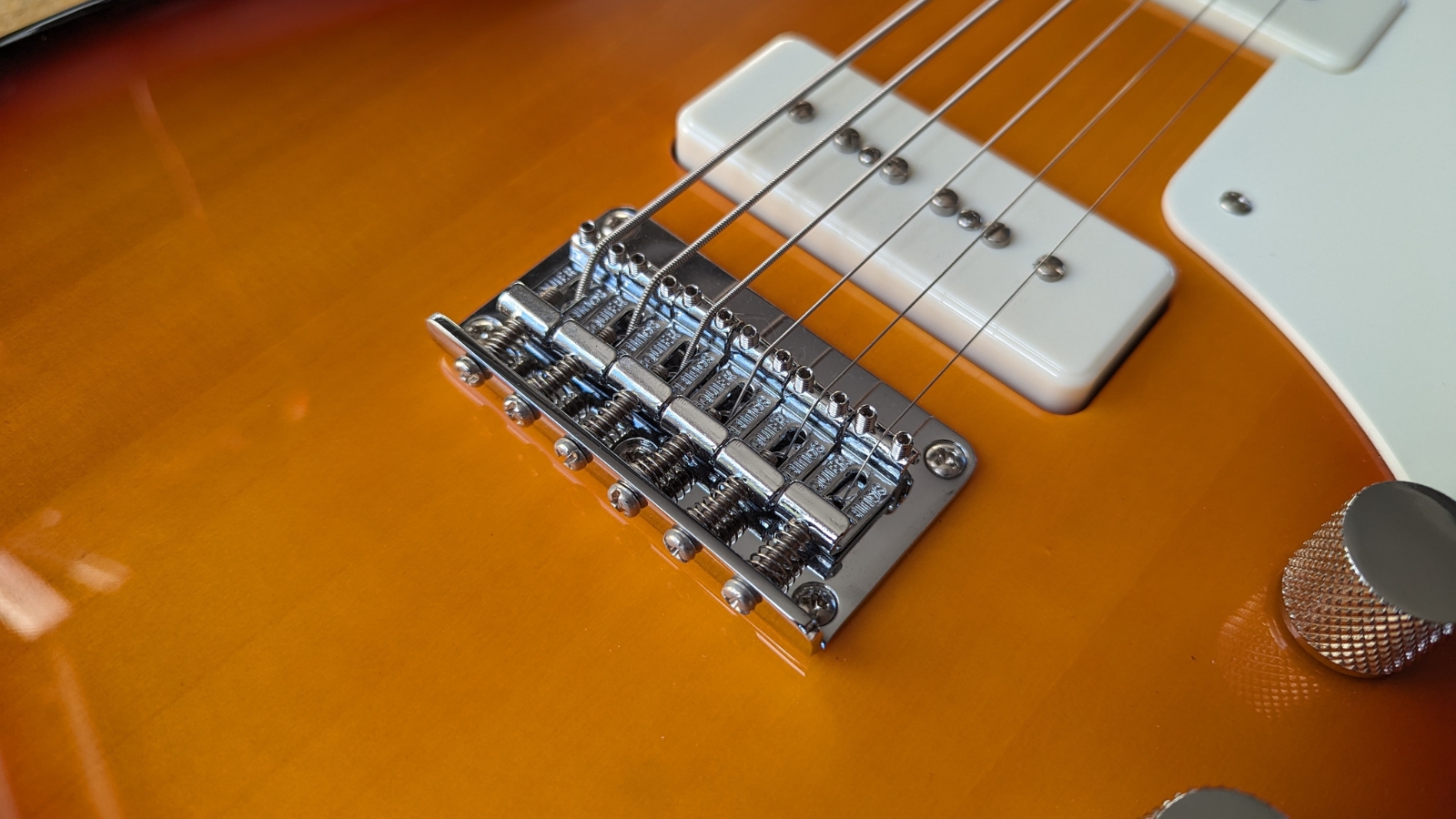
In terms of electronics, it’s a simple layout with two Fender-designed Alnico Soapbar single coil pickups on the Baritone Cabronita. They’re controlled by a three-way pickup selector and a master volume and master tone control. Everything feels nice and solid, with the knurled knobs offering a smooth turning action and the pickup selector flicking into position with a satisfying firm click.
In keeping with the ethos of a regular Cabronita Tele, the hardware set-up is simple and efficient. A six-saddle hardtail bridge anchors your strings through the body whilst at the other end a set of vintage tuners hold up their end. Everything is chrome and feels well-founded, so with the specs out of the way let’s see how it holds up to some playing.
Squier Paranormal Baritone Cabronita Telecaster review: Playability
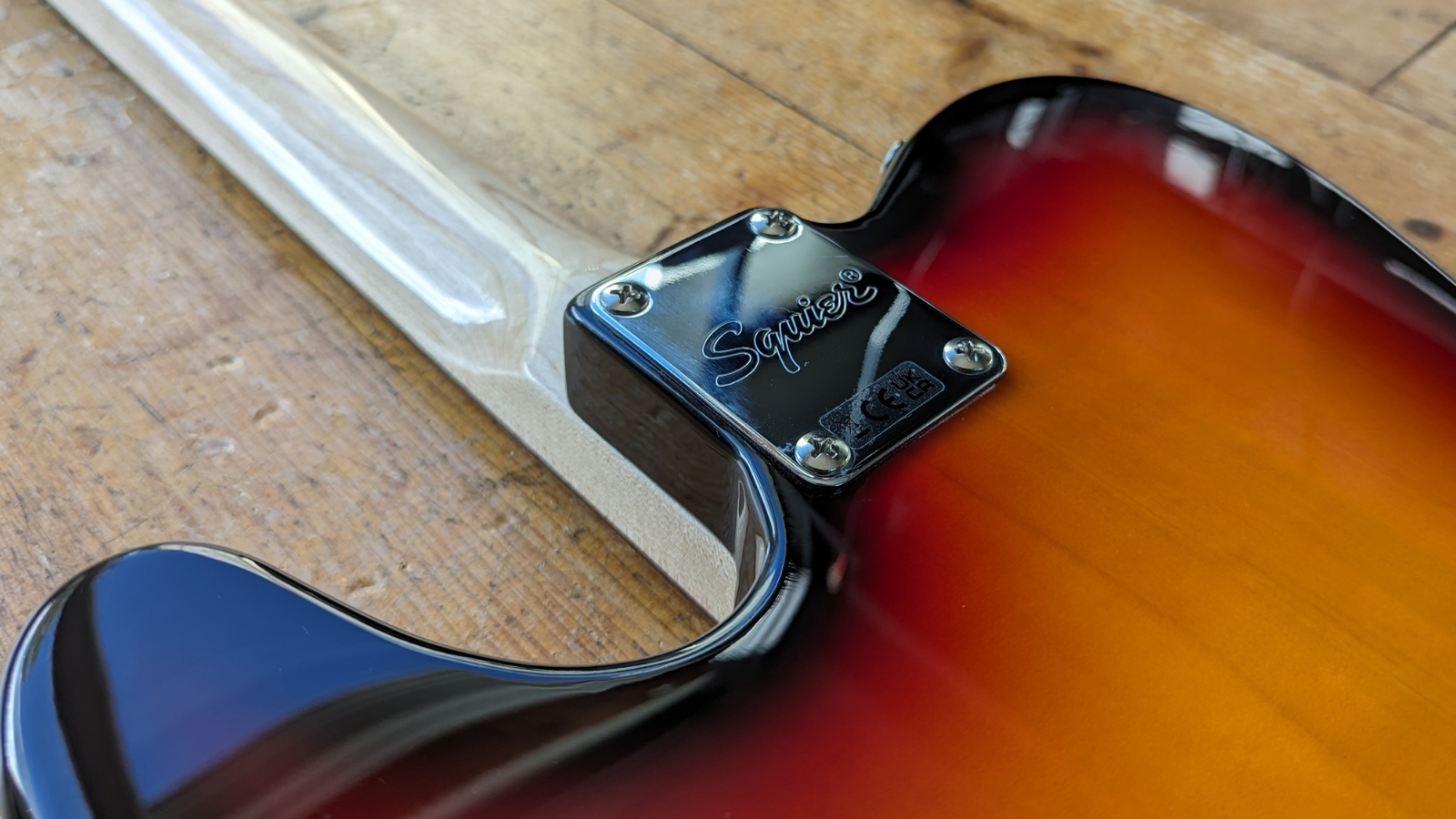
The neck is heftier in the hand than my regular Telecaster and you can definitely feel that from the moment you pick it up. As a direct comparison, the neck depth at the 1st fret is 23mm on the Baritone Cabronita whereas on my Player Plus Tele, it’s a far slinkier 20.8mm. On paper, these may look like small differences but you will feel it from the moment you pick it up. It’s not slow playing by any means and if anything, that rotundness suits the nature of the guitar’s low-end thump and feels appropriate for the thickness of the strings.
If you’ve never played a baritone before then that scale length may feel huge when you first pick it up. I'm used to playing a 28-inch scale baritone in our band, so the jump doesn’t feel too gargantuan but with avid memories of picking up my first baritone, I know that a small jump in scale can feel like a lot. That said, the Cabronita Baritone is in a nice middle ground between a regular Fender scale and a more metal-orientated one designed for drop tuning and a good place to get your intro into baritone guitars without getting put off.
When you go back to a regular guitar you’ll question how you ever thought it was difficult to play
That means open chords don’t feel difficult to fret, nor is it impossible to do some proper bending on it - although you’ll need a supporting finger or two unless you’re freakishly strong. The length of the fretboard also takes some getting used to, as slides or fast chord changes will feel different and the space between the 1st and 5th frets can feel cavernous. This adjustment period can take a little longer than you’d expect with a new guitar so some perseverance may be required to feel at home with the Cabronita Baritone, but once you get there it’s incredibly satisfying to play, and when you go back to a regular guitar you’ll question how you ever thought it was difficult to play.
I gigged the Squier Paranormal Baritone whilst I had it, using it for one of our songs in drop-A tuning and it certainly held up well. However, one negative I noted was that the body cut is quite uncomfortable. There’s no armrest or belly cut so the guitar feels sharp against your picking arm and doesn’t quite sit as nicely as my other baritone. If you’re used to a vintage-style Tele then this probably won’t bother you, but something to note for those of us coming from more modern guitar body shapes.
Squier Paranormal Baritone Cabronita Telecaster review: Sound
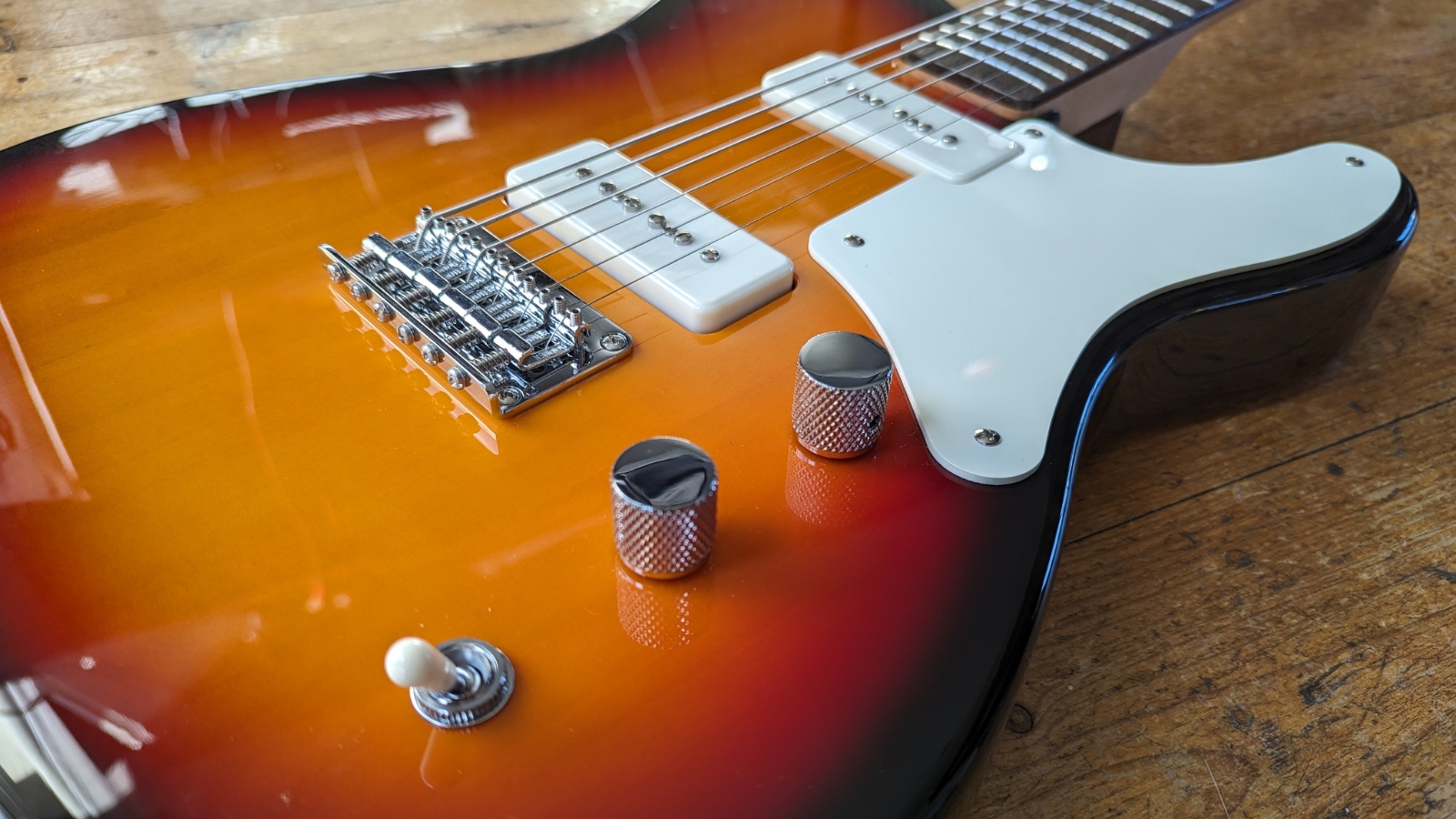
At first, I was skeptical of the soapbar pickups but they offer a lovely clarity that prevents the Cabronita Baritone from getting muddy when you have loads of distortion engaged. It meant some adjustment to my existing setup that was geared for a humbucker-equipped guitar but once I dialled back some treble on my amp, it delivered a sharp bridge setting without sounding harsh, and a lovely warm tone in the neck position with plenty of low-end.
As you’d find on a regular Telecaster there’s quite a big difference between the two pickup positions which gives you a lot of versatility. The neck sound is great for bluesy musing, and with the aid of those aforementioned supporting fingers, I was bending away whilst mixing open chord rhythms and lead playing.
Switching to my standard clean setting with a touch of reverb and delay, the Squier Baritone delivered a delicious energy, our arpeggiated chords underpinned by that low-end girth. Progressions that sound tired on a regular guitar are suddenly given new life thanks to the alternate, lower tuning.
Here the bridge pickup is articulate but perhaps a little too cutting for my taste - quickly solved by a little play on the tone knob which takes away any ‘icepick’. The neck position has a beautiful warmth and viscous tone that manages to never get muddy. It can get a little overzealous on the low end depending on your amp settings, so be prepared to make some adjustments to find the sweet spot.
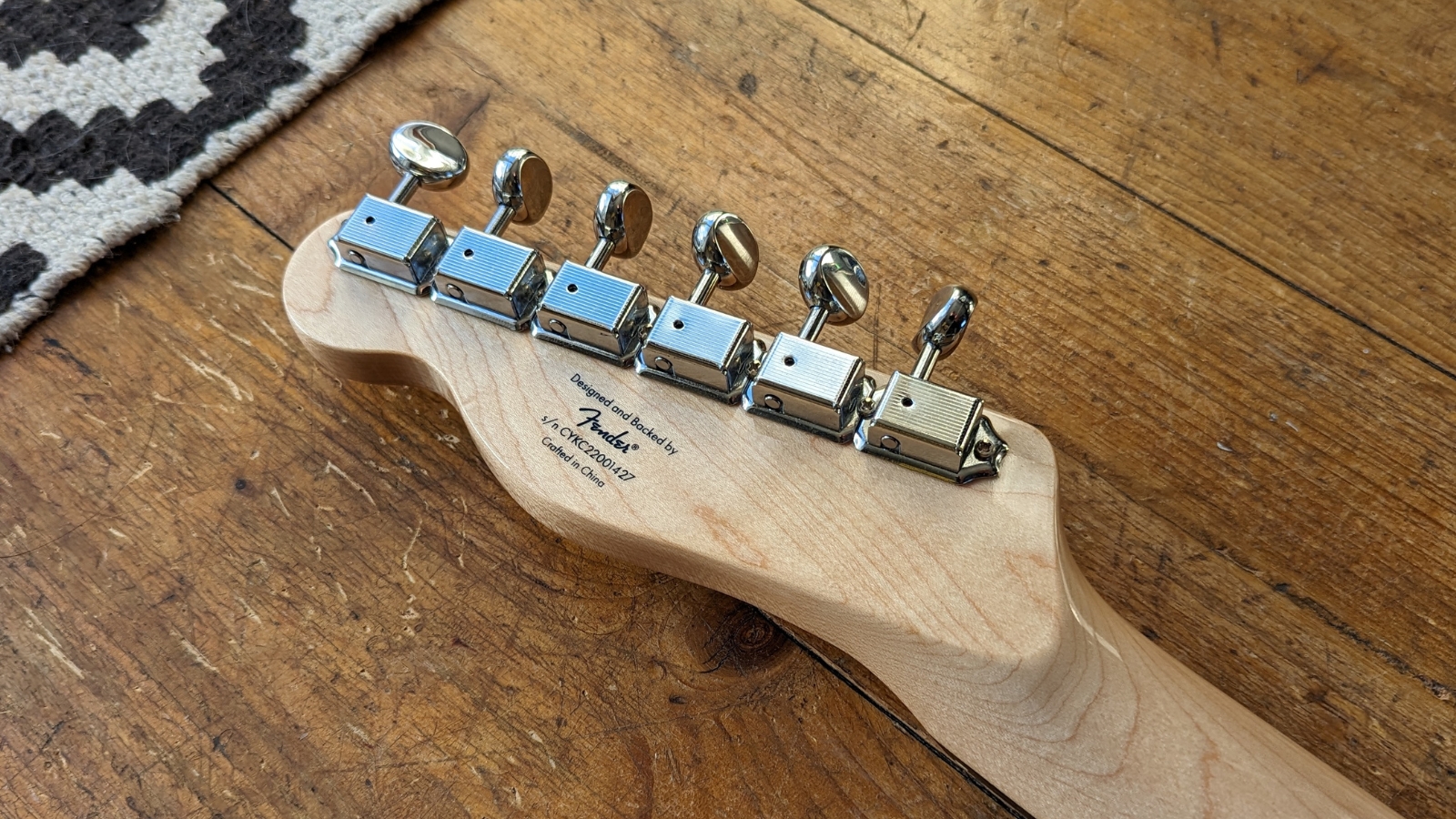
Cranking the drive on my Orange Rocker amp, I go for some distorted playing next. As I'm playing in B everything on the low string tends to sound very heavy, with my rendition of Kickstart My Heart ending up sounding like Mastodon is covering it. I dropped the top string down to A for some heavier riffing and it held up well but required a more deft touch to prevent inadvertently bending fretted note out of tune. I've had my other baritone down to E, a full octave below a regular guitar, so if you’re aiming for drop tuning you’ll definitely need chunkier strings than the stock ones.
The Cabronita Baritone sounds fantastic with high gain settings despite the single coil pickups. The clarity of the pups combined with the low tuning gives it a satisfying sound for thrashy or djent-inspired riffs and it’s got that satisfying clank you hear on a lot of modern guitar recordings that utilize extended range or downtuned guitars. On the neck pickup there’s a superb amount of low-end thump for doomy riffing, and combined with some fuzz you can get some properly nasty tones out of it.
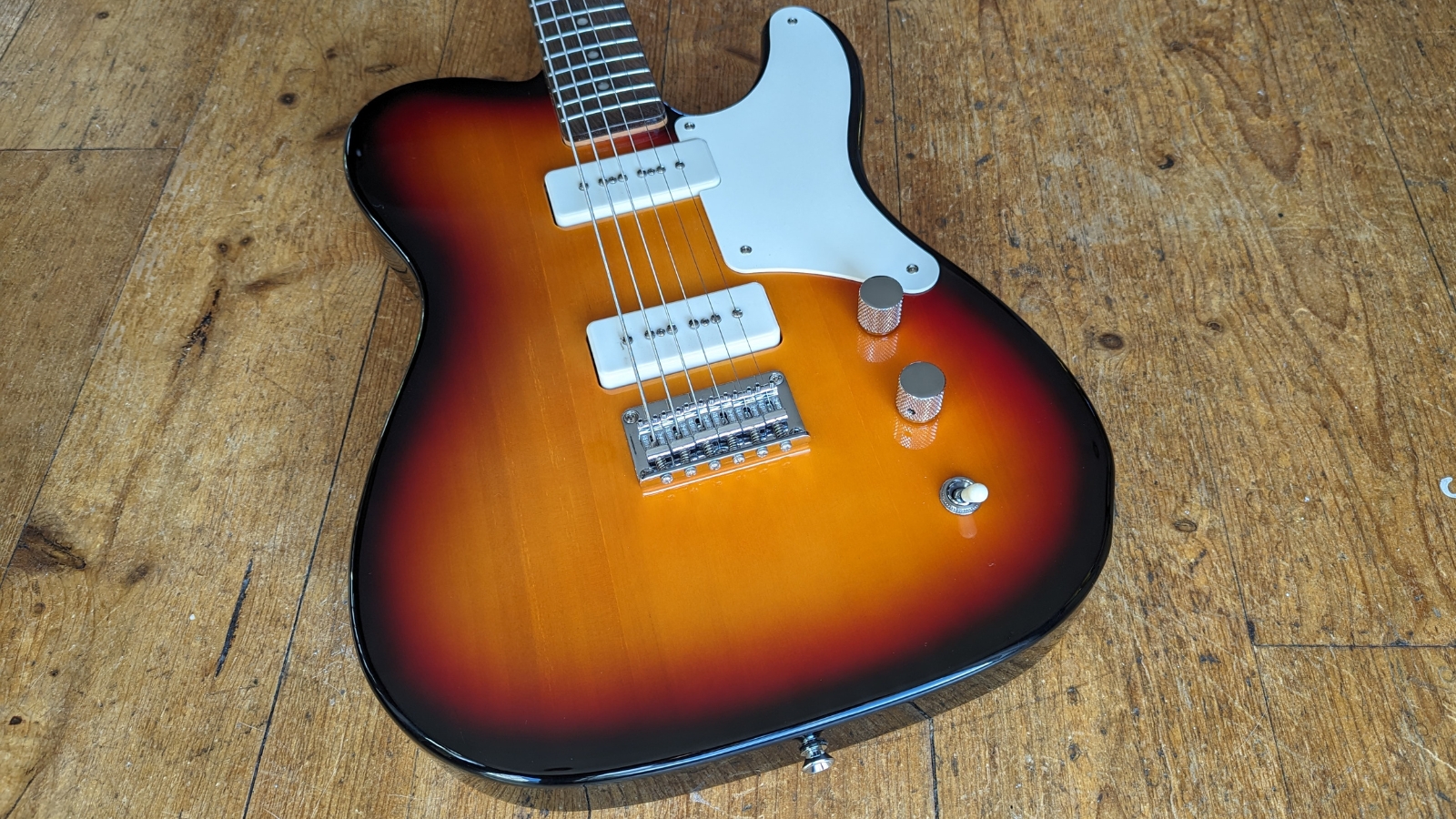
Word of warning - you will need a noise gate if you want to lather on the distortion as the pickups are very susceptible to feedback, which I found out when I cranked the volume during a rehearsal. It never gets lost in this full band setting though and even alongside a five-string bass guitar it still sits in a nice part of the spectrum that’s heavy, yet always audible. For more extreme styles I prefer the sound of a humbucker-equipped baritone but in a two-guitar setup, I’d wager this guitar will add a nice sound to complement another guitar that’s voiced more aggressively.
My final test was using it to record a demo for an upcoming single, adding additional layers to my main baritone that resulted in a fearsome wall of sound. The clarity of the soapbar pickups mixed with the raw power of a humbucker makes for an incredibly satisfying guitar tone. It held its tuning very well too despite me repeatedly wailing on the low string as I bashed out loads of layers to get the perfect take.
Squier Paranormal Baritone Cabronita Telecaster review: Verdict
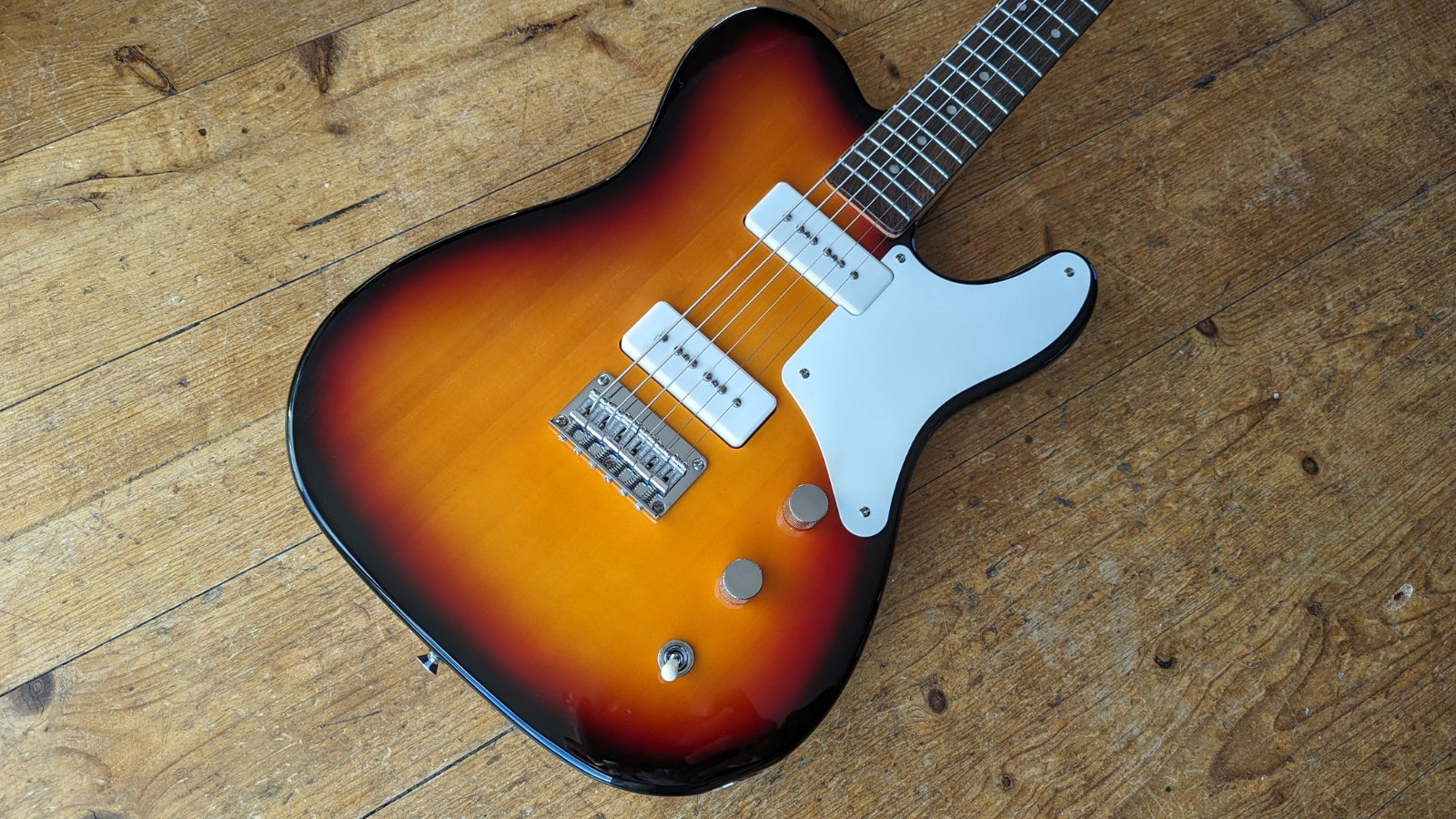
Considering the price point I can’t think of many reasons not to go for the Squier Paranormal Baritone Cabronita Telecaster, particularly if it’s your first foray into the world of baritone guitars. There isn’t loads of choice at this price range and with the quality of what’s on offer here, it’s unsurprising that it’s one of the best-selling guitars of the past few years.
Whether you want a studio workhorse for layering your guitar tracks or a full-on djent machine for heavy riffs, this guitar can handle both with ease and everything in between. I absolutely love the articulate sound of the pickups and once you get over that initial jump in scale length, it’s an inspiring guitar that will jump-start your creativity and keep you coming back for more.
Squier Paranormal Baritone Cabronita Telecaster review: Specs
- Body: Poplar
- Fingerboard: Indian Laurel
- Fingerboard Radius: 9.5" (241 mm)
- Pickups: 2x Fender Designed Alnico Soapbar Single-Coil
- Tuners: Vintage style, chrome
- Scale Length: 27" (686 mm)
- Nut Width: 41.9mm
- Neck Width: 42.2mm (nut), 51.5mm (12th fret)
- Neck Depth: 23mm (1st fret), 23.4mm (12th fret)
- String Spacing: 34.6mm (nut), 53.2mm (bridge)
- Contact: Fender

Matt is a Junior Deals Writer here at Guitar World. He regularly tests and reviews music gear with a focus on guitars, amps, pedals, modelers, and pretty much anything else guitar-related. Matt worked in music retail for 5 years at Dawsons Music and Northwest Guitars and has written for various music sites including MusicRadar, Guitar Player, Guitar.com, Ultimate Guitar, and Thomann’s t.blog. A regularly gigging guitarist with over 20 years of experience playing live and writing and recording in bands, he's performed everything from jazz to djent, gigging all over the country in more dingy venues than you can shake a drop-tuned guitar at.
"A traditionally spec'd, workhorse machine that sounds like a Les Paul should while offering some limited-edition aesthetics": Gibson Les Paul 60s Double Trouble review
“It’s the guitar I’ve dreamed of making for years”: Jackson and Bring Me the Horizon’s Lee Malia champion the rise of the metal offset with new signature Surfcaster











